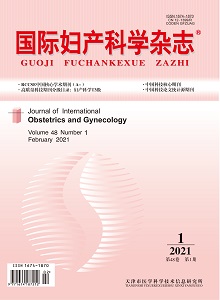Objective: To compare the effectiveness and safety of dienogest and other treatment in preventing the recurrence of endometriosis (EMs) after laparoscopic excision, so as to provide a reference for clinical drug selection. Methods: Search PubMed, Embase, Cochrane Library, Web of Science, ClinicalTrials.gov, CNKI, Wanfang data and VIP related literature and trials before April 2020, the retrieved literature was independently screened, quality evaluated and data extracted by two reviewers. The final included data was Meta-analyzed using Revman 5.3. Results: A total of 1 011 articles were retrieved, and 10 articles were finally included, with a total of 1 740 patients. The dienogest group had a lower recurrence rate than the expectant treatment group (OR=0.11, 95%CI: 0.07~0.19, P<0.000 01), and could relieve EMs-related pain. Compared with the GnRHa group, there was no statistically significant difference in recurrence rate (OR=0.49, 95%CI: 0.19~1.24, P=0.13) and pain relief related to EMs (P>0.05), but has a higher rate of vaginal bleeding (RR=13.11, 95%CI: 5.02~34.21, P<0.000 01) and a lower hot flash rate (RR=0.12, 95%CI: 0.06~0.26, P<0.000 01), the difference is statistically significant. The risk of headache (RR=3.49, 95%CI: 0.99~12.25, P=0.05) is higher, but the difference is not statistically significant. Compared with LNG-IUS, there was no statistically significant difference in recurrence rate between these two group (OR=0.46, 95%CI: 0.50~1.04, P=0.06), but the difference in pain relief related to EMs was statistically significant (SMD=-0.46, 95%CI: -0.70~-0.22, P=0.000 1), the risk of vaginal bleeding (OR=0.38, 95%CI: 0.18~0.81, P=0.01), increased vaginal secretion (OR=0.03, 95%CI: 0.00~0.48, P=0.01), and coital discomfort (OR=0.04, 95%CI: 0.00~0.70, P=0.03) in the LNG-IUS group was relatively high, and the difference was statistically significant. Compared with the mifepristone group, the dienogest group can reduce the recurrence rate (OR=0.41, 95%CI: 0.18~0.96, P=0.04), and the pain relief effect is relatively good (OR=21.00, 95%CI: 2.65~166.45, P=0.004), dienogest also has a lower risk of hot flashes (OR=0.11, 95%CI: 0.01~0.89, P=0.04). Conclusions: Dienogest is effective in preventing the recurrence of EMs, and the effect is better than the expected treatment and mifepristone, which is equivalent to GnRHa and LNG-IUS. The pain relief effect is better than the expected treatment, LNG-IUS and mifepristone, equivalent to GnRHa. Although the risk of vaginal bleeding and headache is relatively high, dienogest is safe and well tolerated, and it is expected to become a new option for long-term treatment of EMs after conservative surgery.

